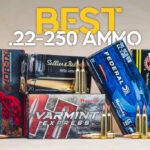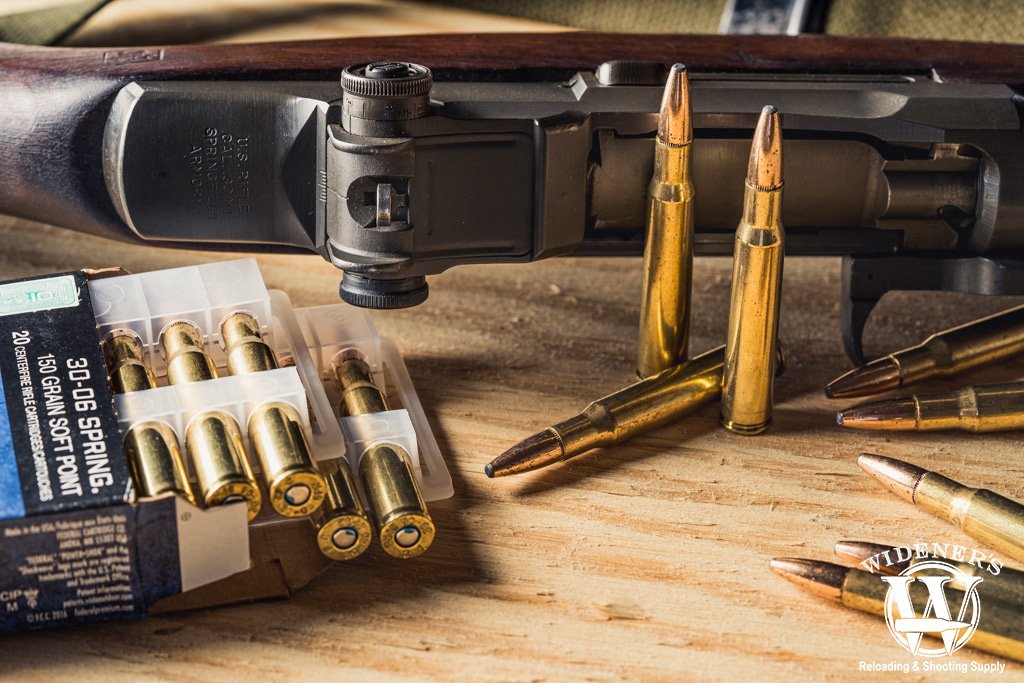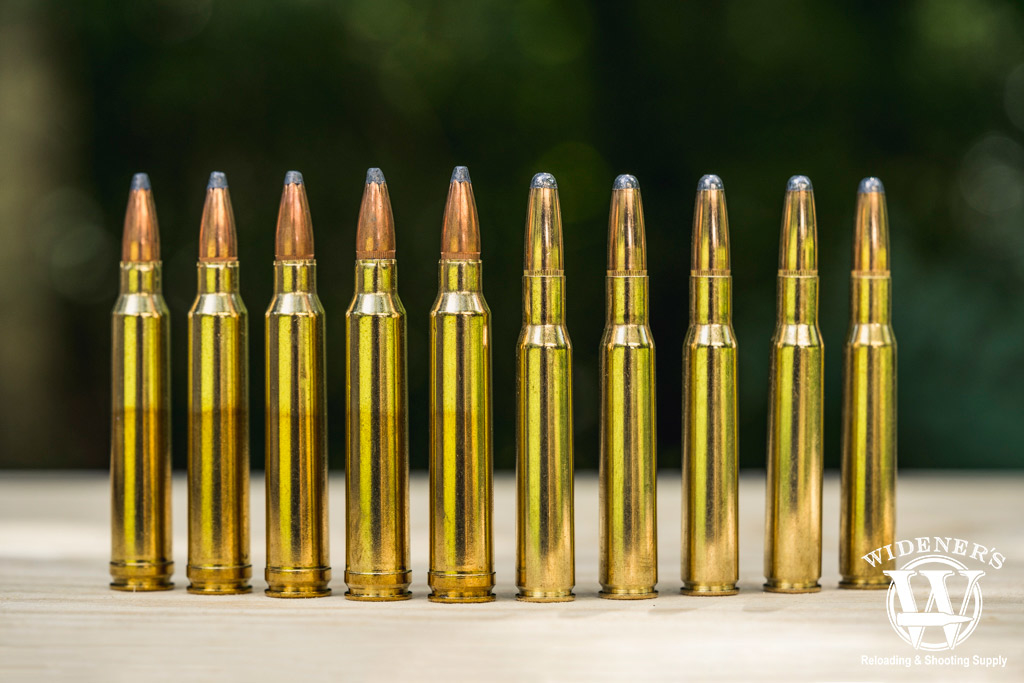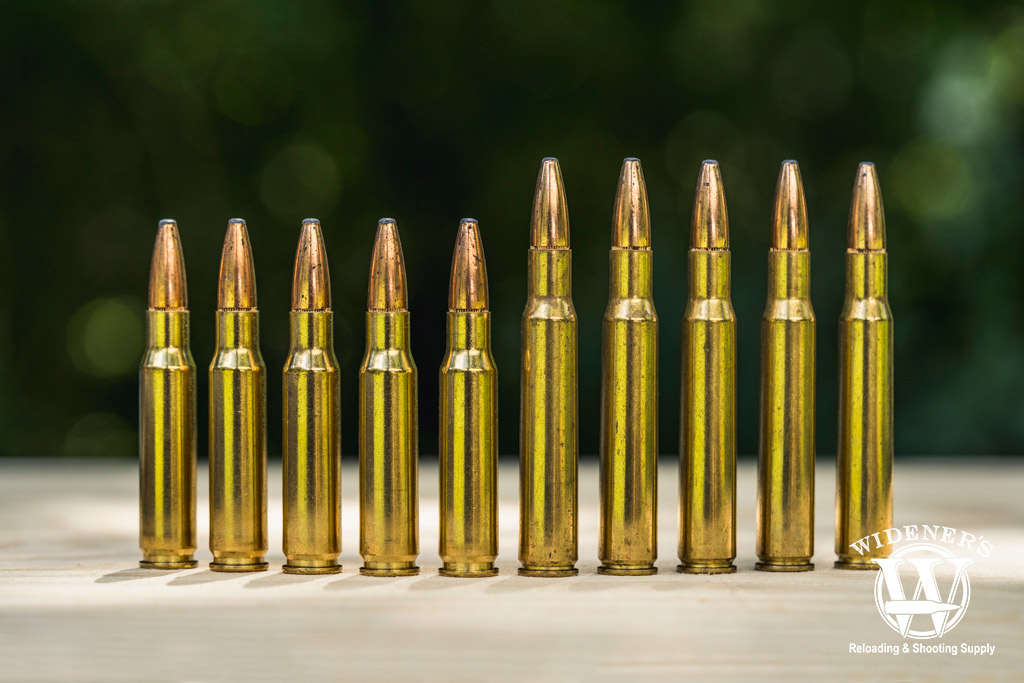

Here’s the million-dollar question: is the .30-06 Springfield still relevant? Having hit the century mark some time ago, it’s easy to wonder if it still holds water. Of course, we are not having the same conversation about the .30-40 Krag, the .303 British, or the .264 Winchester Magnum. Why not? Not because you cannot find those calibers, but because they have a niche, a cult following, or are simply defunct. Yet the venerable ‘aught six marches on like a good soldier should.
30-06 Ammo History
The legendary .30-06 Springfield has a tremendous history, having been placed into service in 1906 to replace the previously mentioned .30-40 Krag rimmed cartridge and the very short-lived .30-03 which was the original chambering for the Springfield 1903 service rifle. That’s right kids, the infamous M1903 was powered by the thirty-‘aught-three, and it just doesn’t sound right.
Both the Krag and the ‘aught three fired heavy (220gr) round-nosed bullets, very much in the legacy of musket balls and cast bullets. But the European nations, long considered the subject matter experts on military weaponry, were in the process of transitioning away from fat, rounded bullets, favoring the sharp-tipped or pointed spritzer bullets. What seems common sense now was emerging technology at the turn of the 20th century, so the recognition that improving the ballistic coefficient dramatically improved kinetic efficiency and reduced rates of deceleration was something entirely new
The M1903 rifle was modified to accept the new .30-06 as the .30-03 had significant woes from the start and really failed to launch. Fast-forward through extensive service in both world wars and we find that the .30-06 has firmly cemented itself in the annals of shooting history. Enormous caches of surplus brass and ammo, along with huge surpluses of the weapons themselves, showed sportsman that the .30-06 is far more versatile than just serving on battlefields oceans away. It was just the right weight and had ideal ballistics for hunting the most popular game in North America: deer, antelope, goats, elk, and black bear all met their match.
30-06 Bullet Types

For more than a century, gun owners have been able to enjoy hunting with a variety of 30-06 ammo types.
Over the decades, the .30-06 has been loaded with an incredible array of bullets. From super-light varmint rounds (if memory serves correctly, there was even a load which used sabots with very small .22-ish bullets) in the 110-125gr range, to 220gr sledgehammers which are marketed for large and even dangerous game, the .30-06 is arguably the most diverse rifle caliber, and definitely one of the easiest to get your hands on.
Full Metal Jacket
Mostly used in the readily available and easily acquired M1 Garand battle rifle, FMJ rounds are easy to find. However, remember this: you cannot run standard off-the-shelf .30-06 ammo through an M1 Garand unless you have installed the gas system modification kit. If you haven’t done the plug conversion, you must use ammunition marked for M1 Garand use (there are several manufacturers to include Sellier & Bellot, and Prvi Partizan). Conversely, you can use M1 Garand ammo in any modern bolt action rifle chambered in .30-06 if you want.
Hollow Points
As we have discussed in several other articles, traditional hollow points are rarely used in hunting loads. They cause too much tissue damage and they are not effective penetrators for thick-hided and thick-boned animals. HPs are best suited, sadly, for human targets and are only really employed in combat rifle calibers.
Hollow points in the larger high-power rifle calibers are generally paired with a boat-tail design and are intended for precision shooting, i.e., match grade.
Soft Points
The lion’s share of hunting bullets are soft points of one type or another. There are bonded bullets, belted bullets, and even partitioned bullets. They penetrate very well, possess excellent ballistic coefficients, and are widely available in the entire spectrum of weights from 110gr to 220gr.
30-06 Ammo Quick Answer Box:
Q: What size of game can you hunt with a .30-06?
A: It depends on the bullet much more than the caliber. The hyperactive 125gr loads, like the Federal Power-Shok, are very suitable for varmints and small-to-medium deer. The ‘aught six is best known as a deer round and the best results for deer are found from 150-180gr. Hornady produces a number of 180gr bullets which are marketed for big game. They even produced a mean 220gr round nose for dangerous game.
Q: What’s the difference between 30-06 Springfield and 30-06 Winchester Ammo?
A: There is no difference. Winchester simply called is the .30 Gov’t ’06, but there is no such thing as the .30-06 Winchester caliber. If your weapon is stamped for .30-06, it is for .30-06 Springfield.
Q: Is the 30-06 Springfield bigger than the .308/7.62×51 Nato?
A: Yes, the brass casing of the .30-06 Springfield (2.494″) is the larger than the casing used for the .308 cartridge (2.015″). The bullet used in the .30-06 Springfield and in the .308 has the same size diameter (.308).
Best 30-06 Ammo Comparison
Sellier & Bellot 30-06 180 Gr SP VS Sellier & Bellot 300 win mag 180 Gr SPCE

The .300 Win Mag (Left) compared to the .30-06 (Right), both are powerful options for bringing down game.
Pitting an 180gr soft point in the .30-06 versus the nasty soft point cutting edge in the .300 Win Mag isn’t exactly a fair fight; the Win Mag is a magnum and does have considerably higher velocity and energy. The ’06 is about 200 feet per second lower at exit and around 500ft/lbs less in energy, but nobody shoots a deer at the muzzle; if they stood that still we’d just use a knife. No, it is along the curve where the .300 Win Mag really does its work. At 400 yards the magnum carries about 700ft/lbs more energy than the ’06, meaning it dissipates slower from the magnum.
Federal Power Shok 30-06 150 Gr SP VS Federal Power Shok .308 150 Gr SP

The .308 (Left) compared to the .30-06 (Right), both have battle-proven results in the field.
Another battle of identical bullets, this one is a little more interesting. Let’s brake from tech talk and have a #realtalk for a second.
If you are hunting big game where your decision point is between the ’06 and a magnum, chances are that rifle cost isn’t your limiting factor. The super-common budget rifles are almost all offered in the smaller, most common magnums anyway. You can find them for the same exact price point as non-magnum long actions (.270 Winchester, .30-06, etc.). Most hunters would choose the magnum just in case if for no other reason. The only exception that comes to mind is for smaller hunters where the .30-06 is at the very top end of recoil absorbing capacity. In this case, the .308 is popular because it allows for a much more compact, short-action rifle.
The .308 hangs in real close across the entire performance curve, being consistently around 100fps under the .30-06. The energy curve is a little more on the side of the .30-06 but certainly not enough to make much of an impact. You could realistically call it an even match, there are no realistic shots where the target is going to make much difference as to which one is used.
Winchester Super X 30-06 180 Gr PP VS Winchester Super X .223 64 Gr PP

The .223 Remington (Left) compared to the .30-06 (Right), both are capable of going the distance.
This is not a comparison which is evenly matched at all, but the question has come up. Yes, many states have authorized the use of .223 Remington for deer hunting, and advances in projectile technology have made it much better for it, but it is just too small.
The 180gr .30-06 is rated for medium and large game (up to 1,500lbs), the .223 for varmints, antelope, and deer. There is no comparison in muzzle energy; the ’06 has almost 2.5 times the energy at the muzzle and by 200 yards has nearly three times the energy of the .223. In fact, at 200 yards the ’06 has nearly double the energy of the .223 at the muzzle.
The one area where they are nearly identical is long-range trajectory. At an improbable 500 yards the .223 drops -53.6” to the ‘06s -54.2”. So there you go.
It can be hard to recommend the .223 as a viable deer hunting caliber. When comparing it to larger calibers, it doesn’t have the same stopping power. Antelope are a more reasonable target for .223 projectiles since they are considerably lighter. The .30-06 makes the most sense here, you can buy ammunition or custom hand load with bullets all the way from 110gr to 220gr heavyweights.
30-06: Living Legend, Or Ancient History?

Still a good choice after 100 years? The .30-06 holds its own against modern calibers in the hunting category.
To answer the nagging question succinctly, yes, the .30-06 is a completely viable caliber 113 years after entering service. Is it the best choice for hunting? That’s tough to say and depends on a lot of variables. However, it is one of the most popular high powered hunting calibers period. It’s consistently in the Top 10 in ammunition sales annually, so it stands to reason that yes, it must be at least in the top 3 best hunting calibers, and perhaps even at #1. It’s tough to say empirically what is really the #1 hunting cartridge. Markets and popularity change due to pricing and availability. We can’t see the future, but we know the ’06 will be up near the top for generations to come.


